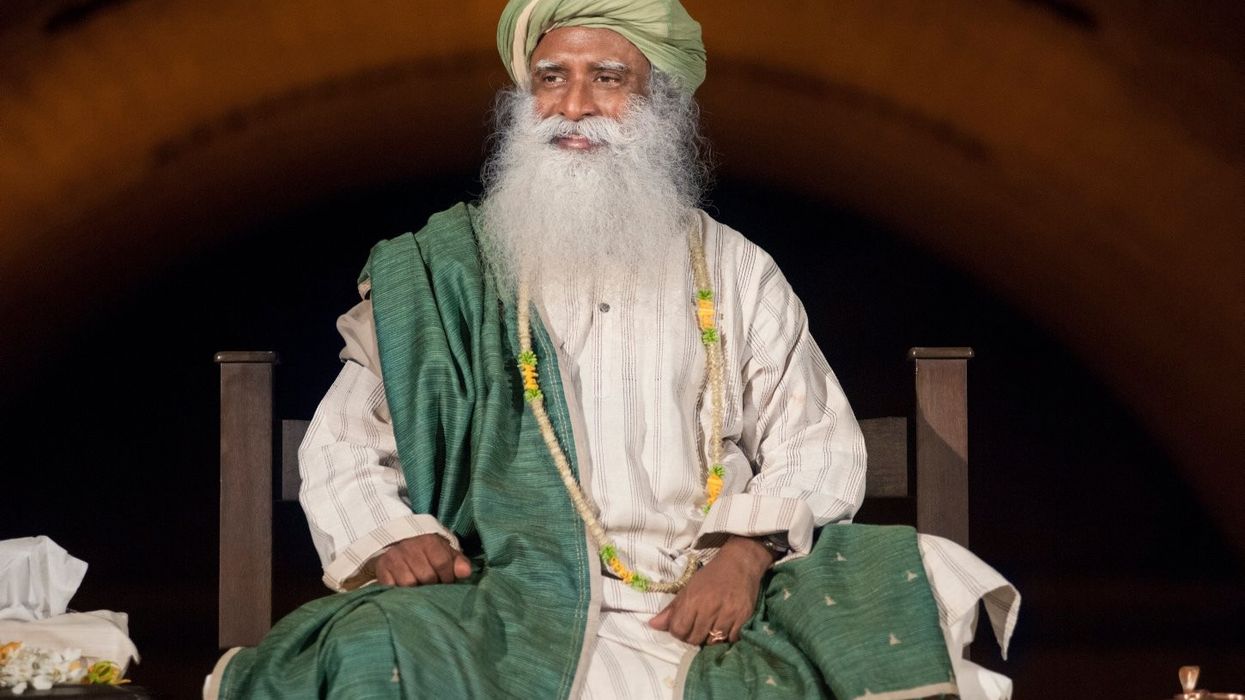by LAUREN CODLING
A FATHER has urged men to speak out if they suspect they have signs of postnatal depression, as he revealed his own struggles with the mental health condition.
Professor Viren Swami has suffered with postnatal depression since his son was born in 2017. He told Eastern Eye the illness is misunderstood, and many potential male sufferers could be alienated because of attitudes in society.
Swami first encountered “debilitating” anxiety when his wife became pregnant and admitted uncertainty of how to deal with it. That was his first sign of the disorder but, at that point, he was not widely aware of postnatal depression in men.
In response, Swami began to push his partner away and attempted to ignore the pregnancy, pretending nothing was going to change. However, his feelings were exacerbated when his son was born.
As the then-37-year-old held his newborn child, he expected to feel a sense of joy. Instead, he felt nothing.
“If anything, I felt relief and then I just felt blank,” Swami said.
In the days that followed, he found it stressful to care for his son. There was a period when he felt that whenever he touched his child, the baby would immediately begin to cry.
“It may have been my imagination, but I found that so difficult as I thought he was rejecting me,” he said.
Describing the first few months of fatherhood as a “very dark period”, Swami spent a lot of time isolated and crying. He would have to force himself out of bed and had trouble sleeping.
Despite only sleeping for two or three hours per night, he would get out of bed at five in the morning and go to work.
“I was constantly burning myself out, but it was like a cycle – every time I felt like I needed to stay in bed, that is when the shame really hit,” he recalled.
“I wasn’t being a good parent or partner and I had a lot of guilt about that.”
Having very little knowledge of postnatal depression in men, Swami initially did not realise what he was experiencing.
As a professor of social psychology at Anglia Ruskin University, he had studied public attitudes towards depression, but not anything related to postnatal symptoms.
It was his wife who eventually approached him with suspicions that he may be experiencing postnatal depression.
“That is when I began to [do] research and realised that my symptoms were clear,” he said. “But even when I was at that point, it was difficult to ask for help. It didn’t come naturally [to me].”
However, there was one significant incident when Swami did reach out for help.
His wife had regular visits from a health visitor, and she would be asked about her well being, but not Swami. Finally, he plucked up the courage to reveal his struggles to the health visitor, but instead of offering support, she dismissed his concerns.
“She said, ‘You’re the dad, you’ve got nothing to be depressed about,’” Swami said. “It made me feel like my experience was completely nothing.”
While reading a case study, he discovered that people were more likely to recognise symptoms of postnatal depression in women. When men experienced the same symptoms, people assumed it was due to stress or lack of sleep.
According to NHS England, an estimated one in 10 men experiences some form of mental illness in the first six months after the birth of a baby.
After consulting his GP, the new father was formally diagnosed with postnatal depression. As he learned more about the condition, Swami made the decision to go public with his story.
He cited two reasons for this decision – to acknowledge the myths surrounding postnatal depression and to let other men know they were not alone. But when an online article was published last year on his experiences with the illness, he received negative comments.
One accused him of being “narcissistic”. Another said: “You should be doing your best to support your wife, not complaining that you’ve been sidelined and it’s the midwife who should be supporting YOU.”
Swami, however, believes that response comes from a lack of understanding of how the disorder can affect men.
“To a degree, I had also internalised this idea that men couldn’t suffer with it,” he admitted. “I suspect there are lots of other men who are experiencing these things but feel unable
to get help. I don’t want any other men to suffer on their own.”
There were many factors which could discourage men from asking for help, especially when they are socialised to believe that being masculine means you should ‘get on with it’, he said.
Swami noted that Asian men could find it “doubly difficult” due to their cultural background.
He thinks mental health is considered something of a myth in Asian culture, which can hinder the ability to talk about it.
“It is a combination of masculinity, but also never being taught to talk about it,” he said, adding his family never spoke about their emotions when he was growing up.
Swami continues to attend therapy and is on medication. Although his wife would like another child, he admits they are both wary how it could affect him.
“From her point of her view, it must be difficult,” the social psychologist said. “I effectively pushed her away [when she fell pregnant] and I don’t know if she’d want to go through that again.”
Swami is also keen to stress that although he is receiving treatment, his postnatal depression has not “just gone away”.
“It doesn’t work like that. It doesn’t just disappear,” he said.
When he was diagnosed, he found it helpful that someone had listened and taken his experiences seriously. It was the first step, but it took a long time for Swami to get to that place.
“I think a lot of men would put that off,” he said. “That could be down to shame or they think it will disappear over time. If you are struggling, ask for help.”
In December, the NHS introduced mental health checks for new and expectant fathers.
The plan was launched to help the partners of pregnant women who are themselves suffering from anxiety or depression.
However, Swami believes more needs to be done. The scheme is a start, he said, but it would not help men like himself whose partner did not show signs of mental illness.
“I would still fall through the net with this programme,” he said.
Suggesting routine diagnosis and care for any parent, irrespective of their partner’s mental health condition, Swami added that a national initiative should be implemented to create awareness.
There are some campaigns and support available, such as awareness group Fathers Reaching Out, but the issue needs to be talked about at a societal level.
“Whether it is through parliament or with our families, those conversations are vital,” he said.











